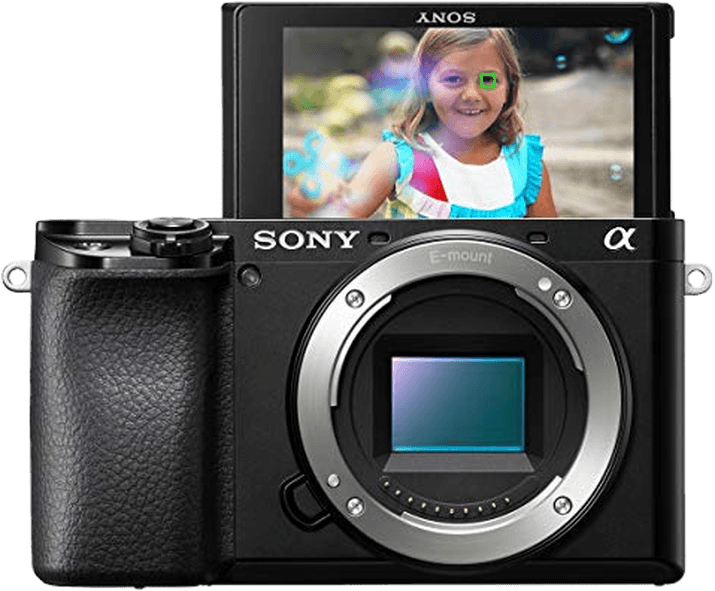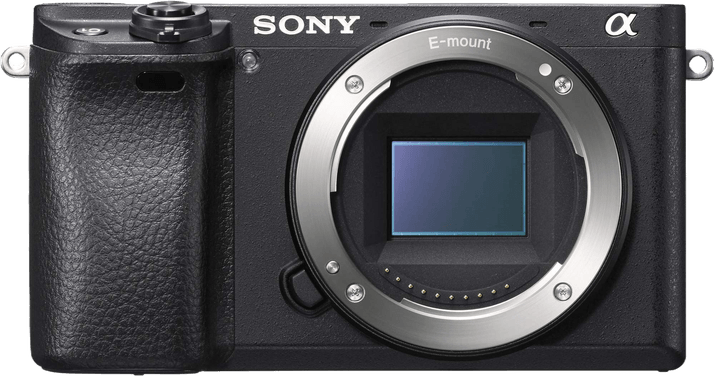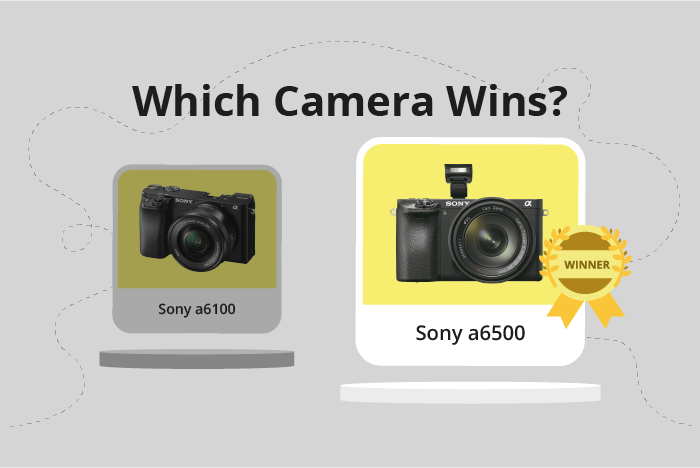Sony a6100 vs a6500 Comparison
Sony a6100

Sony a6500

The Sony a6500 emerges as the winner with a score of 72/100, while the Sony a6100 trails behind at 66/100. Both cameras are mirrorless and share similar dimensions, with the a6100 measuring 120 x 67 x 59mm and the a6500 at 120 x 67 x 53mm. They also have comparable weights, with the a6100 being slightly lighter at 396g compared to the a6500’s 453g.
The a6500’s higher score indicates its superior performance and features, despite being an older model released in 2016 with a launch price of $1400. On the other hand, the a6100, released in 2019, is more budget-friendly with a launch price of $750.
While the a6500 outperforms the a6100 in certain aspects, the a6100 holds its own with a lower price point and slightly lighter weight, making it a good choice for those on a budget or who prioritize portability. Ultimately, the choice between the two cameras depends on individual preferences and needs.
Sony a6100 vs a6500 Overview and Optics
The Sony a6500 comes out on top in our optics comparison with a score of 74/100, while the Sony a6100 trails behind with a score of 68/100. Both cameras share similarities in their specifications, including 24 and 24.2-megapixel resolutions, respectively, an 11 frames per second shooting speed, APS-C sensor sizes, CMOS sensor types, and Bionz X processors. Additionally, both cameras utilize the Sony E lens mount system.
The a6500 surpasses the a6100 in a few key areas, contributing to its higher score. The slightly higher 24.2-megapixel resolution allows for marginally better image quality. Furthermore, the a6500 has a superior DXOMARK sensor score of 85, compared to the a6100’s score of 82. This difference indicates better overall image quality, dynamic range, and low-light performance. Most notably, the a6500 includes built-in image stabilization, a feature absent in the a6100. This advantage allows for sharper images and improved video quality, especially when using non-stabilized lenses.
On the other hand, the a6100 does not have any significant advantages over the a6500 in terms of optics. Its lower score reflects this fact. Nonetheless, the a6100 remains a capable camera, sharing many of the same features as the a6500.
In the realm of optics, the Sony a6500 proves to be the superior choice due to its higher resolution, better DXOMARK sensor score, and built-in image stabilization. While the a6100 is still a competent camera, those seeking the best optical performance should opt for the a6500.
Sony a6100 vs a6500 Video Performance
The Sony a6100 outperforms the Sony a6500 in video capabilities with a score of 91/100, while the a6500 scores 77/100. Both cameras share similar specifications, including a maximum video resolution of 4K and dimensions of 3840 x 2160. They also offer a maximum video frame rate of 120fps, allowing for smooth and detailed footage.
The a6100 has an advantage over the a6500, with its built-in time-lapse functionality. This feature enables the user to create stunning time-lapse videos without the need for additional equipment or software. This added convenience makes the a6100 a more versatile option for videographers who often utilize time-lapse in their projects.
On the other hand, the a6500 does not offer any significant advantages in video capabilities compared to the a6100. Both cameras have the same resolution, dimensions, and frame rate, which means the a6500 does not provide any additional video features that would make it a better choice for video recording.
However, it is essential to consider other factors, such as price, ergonomics, and additional features, when deciding between these two cameras. The a6100’s superior video score and built-in time-lapse functionality make it a better choice for users who primarily focus on video recording. The a6500, while lacking in unique video features, may still be a suitable option for photographers who do not require time-lapse capabilities.
Sony a6100 vs a6500 Features and Benefits
The Sony a6500 emerges as the winner with a feature score of 81/100, while the Sony a6100 scores 68/100. Both cameras share several common specifications, such as a 3-inch screen size, 921,600-dot screen resolution, touchscreen, flip screen, WIFI, and Bluetooth connectivity. However, neither camera offers GPS functionality.
The Sony a6500 outperforms the a6100 with a higher feature score, which indicates that it has additional features or improved specifications that make it a better camera. The a6500’s superiority could be due to factors such as better image stabilization, a more durable build, or an enhanced autofocus system. The higher score reflects the a6500’s overall advantage in performance and functionality compared to the a6100.
On the other hand, the Sony a6100 may have some advantages over the a6500, despite its lower feature score. These advantages could include a lower price point, making it a more budget-friendly option for photographers, or a lighter and more compact design, which can be beneficial for travel photography or casual use.
Taking these factors into account, it is clear that the Sony a6500 is the superior camera in terms of features and performance. However, the Sony a6100 may still be a suitable choice for photographers with specific needs or budget constraints. Ultimately, the decision between these two cameras should be based on individual preferences and requirements, as both offer impressive specifications and functionality.
Sony a6100 vs a6500 Storage and Battery
The Sony a6100 triumphs in the storage and battery category with a score of 37/100, outperforming the Sony a6500’s score of 21/100. Both cameras share similarities in their storage specifications, featuring a single memory card slot and accepting SD/SDHC/SDXC and Memory Stick Pro Duo cards.
The a6100’s superior performance stems from its longer battery life, providing 420 shots compared to the a6500’s 350 shots. Additionally, the a6100 benefits from USB charging capabilities, which the a6500 lacks. This advantage allows for convenient charging options and ensures the a6100 remains readily available for use.
Despite its lower score, the a6500 utilizes the same NP-FW50 battery type as the a6100, offering compatibility between the two models. However, the a6500 falls short in battery life and charging flexibility.
The Sony a6100 emerges as the better choice for storage and battery needs, offering extended battery life and versatile charging options. While the a6500 shares similar storage specifications, its battery performance pales in comparison, making the a6100 a more reliable option for photographers.
Sony a6100 vs a6500 – Our Verdict
Are you still undecided about which camera is right for you? Have a look at these popular comparisons that feature the Sony a6100 or the Sony a6500:

